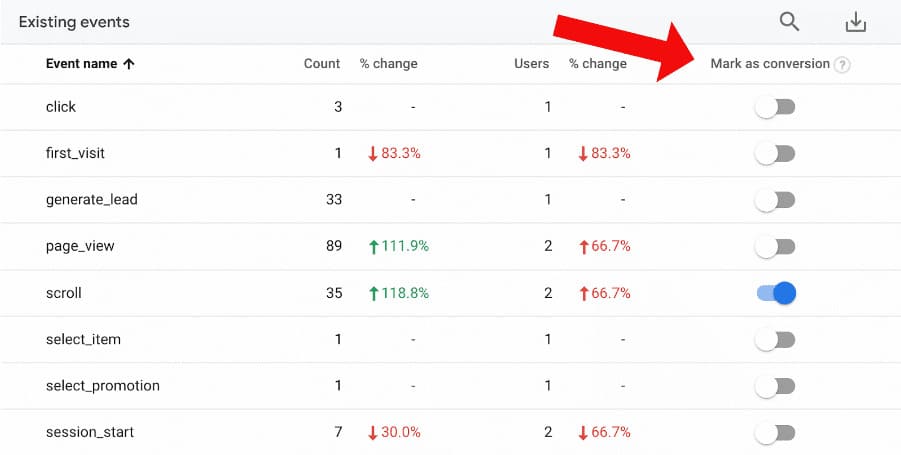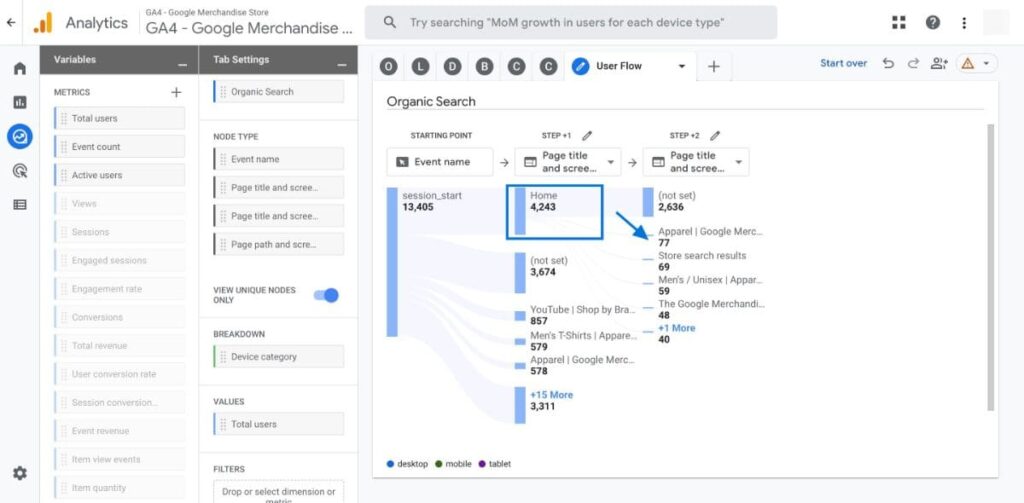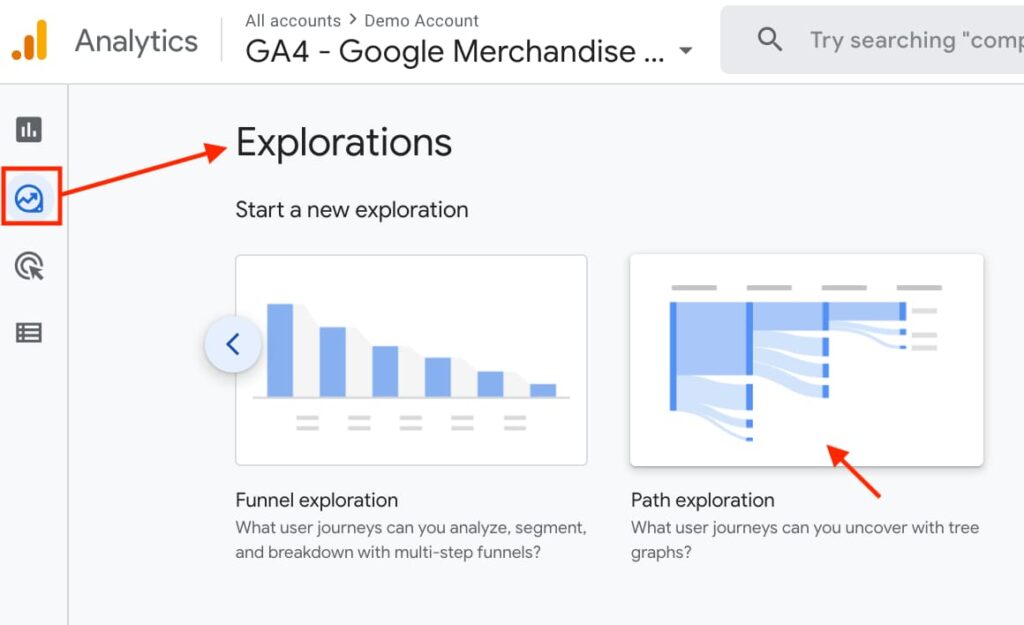SEO Conversion Rate
The forces that convert online traffic into income for your brand are conducted actions. Indicators that measure conversion metrics might optimize depending on the profile and business goals and are something you can monitor. That being said, a variety of KPIs can help you gain a better understanding of SEO conversion rates and tracking methods.

We’ll go into detail in this guide on what a conversion metric is, how it’s determined, and actions you can take to raise it within the search engine.
What is the conversion rate in SEO?
This indicator measures the percentage of users who visit the website through search and perform the desired action. It’s opposed to those who observe the page and leave without engaging or intending to convert. This is known as your SEO conversion rate.
How to Calculate Your SEO Conversion Rate
Simply divide the number of conversions by the total number of visitors, then multiply the result by 100 to determine the conversion rate. SEO focuses on tracking organic conversions across landing sites, blog articles, case studies, etc., even if the CVR formula is the same as it is for other marketing channels (PPC, drip emails, etc.). This information is important since it shows which search engine tactics are effective and which are not.
How to Improve Your SEO Conversion Rate
For the ultimate ROI, the rate is crucial. High conversion rates increase the value of organic visitors and generate more income without requiring further marketing expenditures. Both on-page and off-page SEO are useful, but you may also raise your ranks by enhancing user signals.

You can increase the convertibility of your work in several ways. Among the most successful are:
Understand Your Target Audience
Monitoring and analyzing website data to gain insight into visitors is one of the tried-and-true methods of conversion rate optimization. Where to focus the conversion-focused efforts is shown by this data. Create a user persona — a representation of an ideal client — using this data. This ought to showcase all of the important details about your target prospects, including their issues, dislikes, and hobbies.
Optimize Your Website’s User Experience
You need to make a significant improvement to the user experience if conversion rates aren’t increasing despite the best efforts. Change its design according to best practices to observe whether conversions are impacted. Optimize a page that users want to interact with by using visitor data. A collection of research and case studies that show how users interact with websites forms the foundation of high-converting page design.
Use Compelling Calls to Action (CTAs)
CTA button optimization is mentioned in all of the top conversion rate optimization strategies. Call-to-actions, or CTAs, are the main element that motivates users to act on your websites. The CTA wording can be imaginative; utilize text that is action-oriented and conveys a sense of urgency. Place them above the fold to make them visually appealing, then experiment with different versions to maximize click-through rates.

Improve Page Load Speed
Visitors will probably click away from your website before it has even loaded if it takes too long. Optimize the code and pictures on the page to speed up loading. Fewer people will leave the website before it has loaded if you can shorten the time it takes for pages to load. Aim for page loads that take no more than four seconds. The shorter the period, the better your search results will be.
Implement Effective Keyword Strategies
Search terms are placed on target pages to attract traffic and make them more visible to users; it helps you to guide them. You can convert users who can make a choice and who have faith in your product or service by using a clever SEO content strategy. A keyword must result in actions rather than just visits when it comes to conversion rate optimization or CRO. It implies that you must employ language that speaks to a more specific audience and keep their search intent in mind.
Leverage High-Quality Content
You should make sure that every post you make is unique, correct, and pertinent. You should also post frequently and consistently. Instead of copying content from other competitors’ postings, create original content for the landing page.
Distribute blog posts to increase website traffic from search results and pique interest in your company and other offerings. Additionally, you may post video content, which explains every feature of your product and helps turn visitors into customers.
Utilize Social Proof and Testimonials
To develop trust and persuade the visitors to be turned into ecommerce buyers, it’s vital to focus on testimonials. In addition to increasing metrics and trustworthiness, this tactic can assist you in increasing the property’s visibility in search results.
Reviews are one of the most consistent approaches to getting social proof since they give direct feedback from customers who have used the service. Product reviews from your buyers should be showcased on the product page where they’ll be more visible for prospect searchers.
Monitor and Analyze Your SEO Performance
Use GA4 to set up conversion tracking and examine the organic traffic patterns. Look at metrics like the bounce rate, time on the page, and user flow to find possible obstacles or drop-off points in the conversion process.

Analyzing your website’s analytics can give you important information about how organic traffic is navigating your property and where you might be losing prospects and their conversions.
Conduct A/B Testing for Continuous Improvement
Testing is one of the best conversion optimization techniques for making data-supported changes and lowering risk. Before determining whether they are effective for your property, you must evaluate their effects.
By comparing your variant to the original copy, A/B testing enables you to determine which one is more effective in terms of driving conversions. This way, you’re enabled to observe how your visitors judge both versions and figure out what kind of content appeals to them more.
Conversion Metrics to Track
CRO is all about understanding visitors’ requirements, objectives, and goals to provide them with the value they came to the website for. You can make sure that your design, messaging, and marketing encourage users to complete target conversion activities by monitoring CRO metrics and KPIs, which show you where visitors are active or blocked on the page.

Without losing attention and control, it is impossible to keep an eye on and calculate everything. Which KPIs and conversion indicators are essential for researching the path to purchase?
1. Click-Through Rate (CTR)
You must be aware of how your material is featured in search engines, even if it’s in the ecommerce industry. With the help of the click-through rate (CTR), you can keep an eye on the headlines, title tags, and ad copy. It also helps you do split tests to see which ones work best for the target demographic.
Use the following calculation to get click-through rates: clicks/impressions = CTR. For SEO campaigns, aim for an average CTR of 2.5 percent. Conversely, depending on your sector, digital ads (including display and search engines) can range from 0.5% to 4%.
2. Bounce Rate
It’s the proportion of users who exit a website without doing anything, like going to another page or completing a form. To put it another way, the target visitor arrives at the website but departs without interacting with any of the other material.
High bounce rates can indicate that the pages aren’t designed for a fantastic user experience, that you’re drawing in visitors who aren’t interested in your product, or that you’re not providing a clear journey with internal links or call-to-action.
3. New vs. Returning Visitors
Knowing how first-time visitors behave differently from repeat users can be useful. If you are aware of how new visitors behave, you can find particular ways to turn them into decision-makers. Determine their areas of interest and explain how to develop them for the step in the sales funnel.
By creating a segment just for return visitors, you may examine their conversion rates. Your convertibility can be improved by examining the reasons they returned and the reasons they didn’t initially turn into leads.
4. Time Spent on Page
The amount of time visitors spend on the website is another conversion measure to monitor. Session Time Spent on Page is the term for this. Because consumers spend more time on websites with valuable, well-crafted content, this statistic tracks the value of the content.
Additionally, you can figure out how long they spent on specific pages or the entire website. Users tend to spend more time on pages that discuss pricing and how-tos compared to about us or sign-up pages.
5. Average Session Duration & Behavior Flow
How long a visitor stays on the website is shown by the first metric. If you want to increase conversions and revenue, you probably need to make some changes if users leave a site rapidly.

The behavior flow metric in GA4 lets you see the routes visitors take on a page. Brands can determine the best conversion routes and the places of friction in user journeys that result in user abandonment by examining behavior flow metrics.
6. Exit Pages
This measure compares the proportion of visitors who leave a page on the website to the overall number of visitors. The number of people who leave a website, regardless of their prior participation, is known as the exit rate.
By improving the conversion funnel to more effectively lead visitors from one phase of their trip to the next, you can lower the exit rate on particular web pages. Installing tracking or heat-mapping tools could also help you gain a better understanding of how visitors interact.
7. Audience Demographics
More detailed approaches to SEO are made possible by customer data such as gender, geography, and devices utilized, which help to align means with user behavior.
This alignment increases the likelihood of higher organic rankings by improving the user experience and content relevancy. For instance, adopting a mobile-first design strategy may be prompted by the knowledge that a sizable percentage of an audience visits your website via mobile devices.
8. Value Per Visit
You can see how much each visit is worth to the business by looking at that vital indicator. You can determine which pages are most successful at turning visitors into decision-makers by looking at the value per visit.
You can utilize pre-made tools that provide the expected revenue for your targeted keywords to determine the value per visit. The tool will count the number of visits for each keyword and give you income estimates as you pick the average number of buyers and the conversion rate per sale.
How to Measure SEO Conversions in Google Analytics 4 (GA4)
The first step in directly linking your SEO objectives to income generation is understanding how to track SEO conversions. Every page on the website has a conversion rate that you can monitor. By doing this, you can determine which pages and ecommerce products generate the most sales and which require improvement.

Examine the differences in sales between desktop and mobile devices. If one channel performs better than the other, think about improving the customer journey on the less effective channel.
Setting Up Goals in GA4
Logging into your Google Analytics account and choosing the GA4 property linked to your website is the first step. Choose “Goals” from the “Events” part of the menu on the left-hand side of the GA4 property. Check to see if any of the pre-established goals on the list fit your tracking needs. Enter the specifics of the objectives. Give the tracked interaction a name that accurately describes it. Select a goal type, such as “Event,” for an activity.
Using Events to Track Conversions
Setting up event tracking is the first step in creating critical events in GA4. You can then tell GA4 that certain occurrences are more significant than others. A purchase will be your default key event if the property is solely connected to a web data stream, and it cannot be disabled. To designate an event as a conversion, select the toggle next to the event that is crucial to the company under Admin > Data display > Events.
Analyzing Conversion Paths
How do several channels interact with one another, and which channels generate the greatest conversions? Any kind of user interaction on the website can be tracked as a conversion using the intended Google service. Conversions that occur in a single session, such as a visitor’s initial visit to the property, are rather easy to track. Additionally, it’s excellent if you’re hoping for instant conversions from a marketing strategy, like an SEO campaign.
Reporting on Conversion Data
GA4 comes with an integrated events report. Reports > Engagement > Conversions is where you can find it. The event name is the Conversions report’s default dimension. Click the small arrow next to the event name and select “Page path” from the dimension picker to see which page a user was on when they triggered an event. To delve deeper into conversion statistics, add a plus sign. The conversion name will take the place of “All events” in the “Conversions metric” column.
FAQ
What is a good conversion rate for SEO?
The top 25% turn at 5% or more, whereas the average landing page conversion metric across industries was 2.35 percent. Your goal should be to rank in the top 10%, which are landing pages with conversion rates of at least 11.50 percent.
How to measure SEO conversion?
An SEO conversion rate can be expressed as a percentage by dividing the number of conversions (i.e., desired actions such as purchases or form submissions) by the total number of visitors to the website. Then, multiply the result by 100.
What tools can I use to track and measure my SEO Conversion Rate?
Google Search Console (GSC) and Google Analytics 4 (GA4) are the two most basic and free programs for SEO conversion rate management and other indicators. GSC, a service that displays solely Google organic traffic data, allows you to find a website’s organic impressions and clicks.
How often should I review and optimize my SEO Conversion Rate?
Every three to six months, you should optimize an SEO approach since if you continue to do the same thing, you will continue to get the same results and appropriate ROI. That’s not to say you shouldn’t try new things or wait for your efforts to yield tangible results; it just means you need to recognize when to change course and go after more recent marketing goals.





